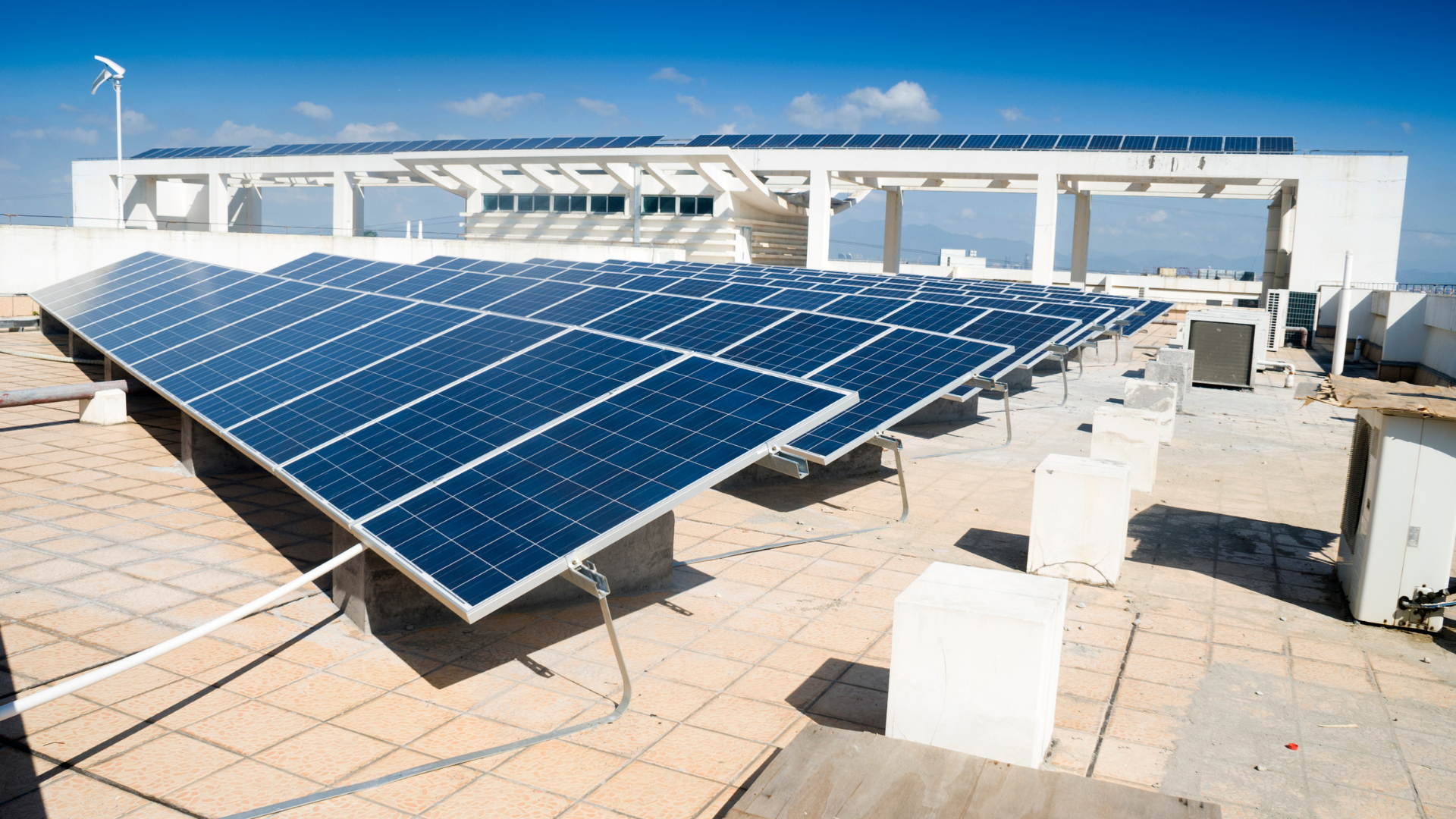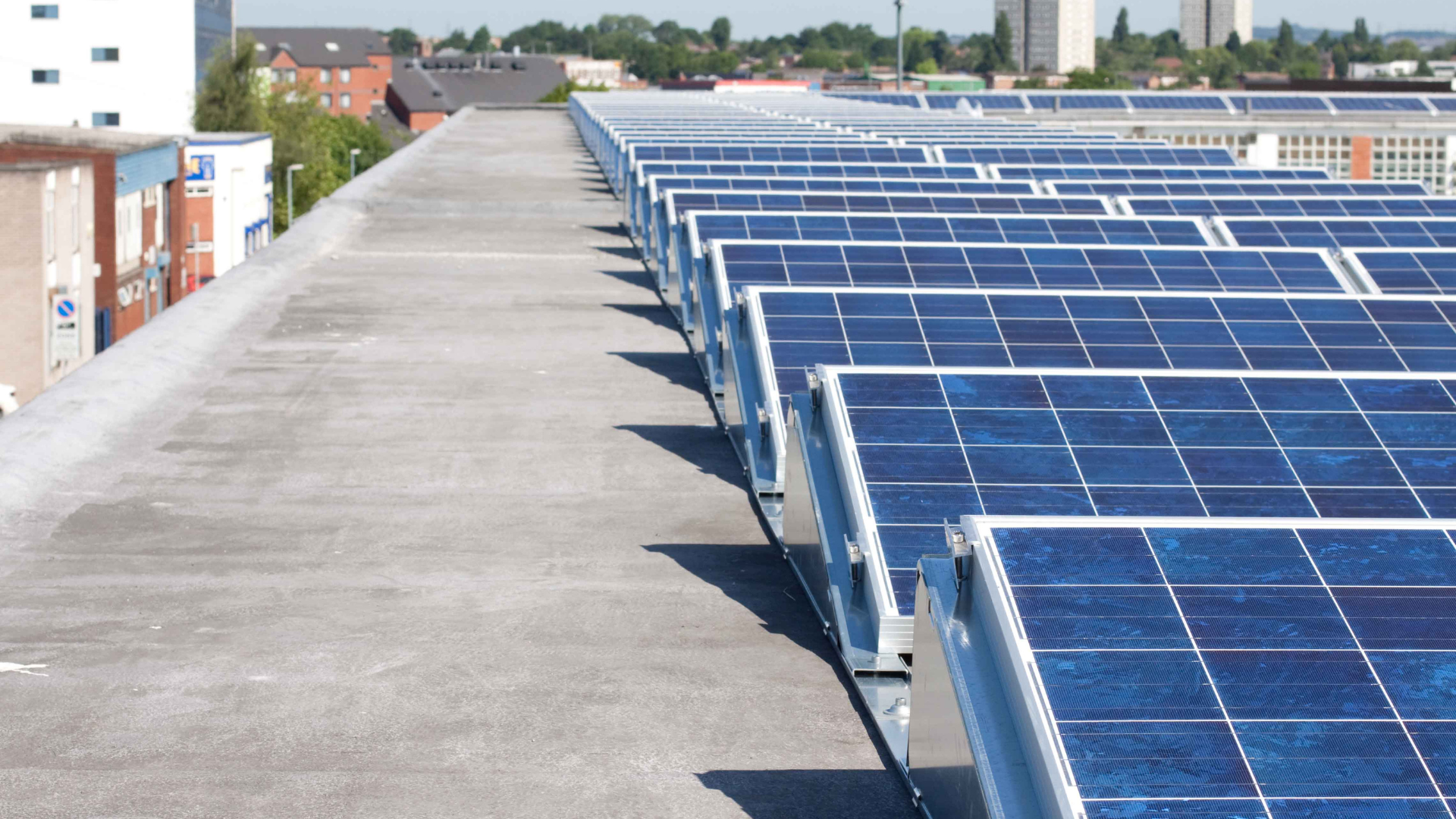Being efficient is a huge part of running a successful commercial business. If you’re not saving money on expensive power and utilities, it can cut a chunk out of your bottom line. But how can you be a prudent businessperson? You do it by adopting the most efficient solar panels on the market to use on your business’s property. But everyone is looking for efficiency with solar panels. What is the most efficient solar panel? How do you spot the difference between advanced tech that looks and works great versus something that is all flash and no substance?
Let’s find out.
What Makes A Solar Panel Efficient?
There are a few key factors that contribute to the efficiency of solar panels on roofs and properties.
Cell Technology
The type of solar cell used in a panel can significantly affect its efficiency. The most efficient solar cells currently available are monocrystalline silicon cells, which typically have 15-20% efficiency.
Polycrystalline silicon cells and thin-film cells have lower efficiencies, typically around 12-15%.
Panel Design
The design of a solar panel can also impact its efficiency. For example, using a reflective backing can help increase the amount of sunlight captured by the panel.
Manufacturing Quality and Technique
The quality of the materials and manufacturing techniques used in producing a solar panel can also affect its efficiency.
Temperature Coefficient
The efficiency of solar panels decreases as the temperature rises. Panels with low-temperature coefficients will produce more power per degree rise in temperature. This property also relates to the panel quality and the material used.
Reflection Loss
The surface of the solar panel should be anti-reflective to avoid reflection loss, leading to lower efficiency.
Overall, the efficiency of a solar panel is a function of its ability to convert sunlight into electricity, as well as how well it can withstand environmental factors such as temperature and shading.
What Solar Panels Last The Longest?
The lifespan of solar panels can vary depending on the type of solar panel and the manufacturer. However, well-manufactured solar panels made with high-quality materials last the longest.
Monocrystalline solar panels have a longer lifespan than polycrystalline solar panels. They come from a high-purity silicon crystal. In contrast, polycrystalline solar panels derive from multiple, lower-purity silicon crystals.
These high-purity crystals in monocrystalline solar panels make them more resistant to wear and tear and, thus, can last for 25-30 years.
Proper solar panel maintenance also plays a significant role in determining their lifespan. This includes regular cleaning of the panels and routine inspection of the wiring and connections to ensure they remain in good working order.
As a rough estimate, typical solar panels have a lifespan of 25-30 years, but they will continue to produce electricity at a reduced rate after that period.
To ensure optimal performance and maximize the lifespan of solar panels, it is vital to perform regular maintenance and have them inspected by a professional every few years.
What Is The Most Efficient Solar Panel For Commercial Businesses?
The most efficient solar panels for commercial businesses are those made with monocrystalline silicon cells. Monocrystalline solar panels are made from a single, continuous crystal of silicon and generally have the highest efficiency rates, typically around 15-20%. They are also the most durable and long-lasting type of solar panel, with a lifespan of about 25-30 years.
Efficiency measures how well a solar panel can convert sunlight into electricity. Higher-efficiency panels can generate more electricity in the same space as lower-efficiency panels. Other factors to consider when selecting solar panels for commercial businesses include cost, durability, and the specific needs and requirements of the company.
However, they are also generally more expensive than other types of solar panels.
Another option is polycrystalline solar panels which have similar efficiency as monocrystalline but lower cost and less space requirement.
Thin-film solar panels, made from a thin layer of photovoltaic material, are also an option for commercial solar power systems. They have slightly lower efficiency rates, typically around 12-15%, but are also less expensive and can be more flexible in design.
However, the best type of commercial solar panel will depend on your specific needs and application.
It is essential to consult with an Orange County solar power expert to evaluate your particular application and determine the best type of commercial solar panel for your system.
Get Efficient Solar Panels In Orange County With REPOWER Orange
Here’s how the solar panel installers at REPOWER Orange can help businesses achieve sustainable power solutions that won’t break the bank.
Orange County solar installers at REPOWER Orange can help you design and engineer a solar panel system specifically tailored to your business’s energy needs and the unique characteristics of your building and site. This can help ensure you get the most out of your solar investment by maximizing the amount of electricity your panels generate.
Solar panel experts at REPOWER Orange have the experience and knowledge to install your solar panel system cost-effectively. This can help you save money on installation costs, which can be a significant portion of the overall cost of a solar panel system.
Likewise, our Orange County solar installers help you take advantage of available government incentives, such as tax credits and rebates, which can help reduce the overall cost of your solar panel system.
By choosing a reputable and experienced solar installer in Orange County, like REPOWER Orange, you can help ensure that your solar panel system is installed correctly, is cost-effective, and generates the maximum amount of electricity possible. This can help your business save money on electricity costs in the long term and offset a significant portion of the costs of the solar panel system over time.



Recent Comments